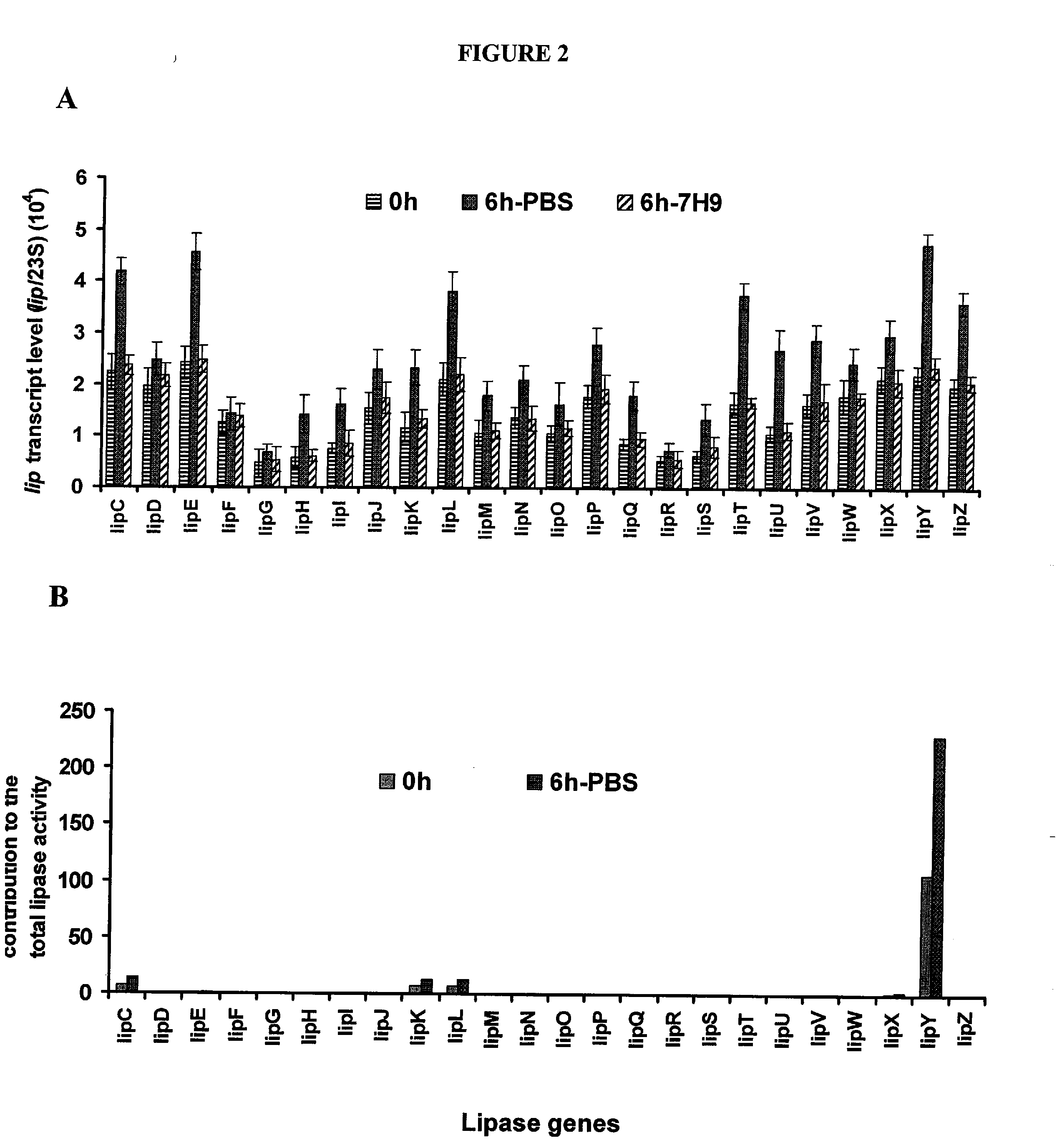Targeting of long chain triacylglycerol hydrolase gene for tuberculosis treatment
a technology of triacylglycerol hydrolase and tuberculosis, which is applied in the direction of dna/rna fragmentation, peptide/protein ingredients, depsipeptides, etc., can solve the problems of mycobacterium tuberculosis /i>posing serious threats to the control of tuberculosis, and the eradication of tuberculosis has never been achieved
- Summary
- Abstract
- Description
- Claims
- Application Information
AI Technical Summary
Problems solved by technology
Method used
Image
Examples
Embodiment Construction
[0019] The ability of Mycobacterium tuberculosis to go into a latent / dormant state and survive under such conditions for decades make TB control extremely difficult. Developing drugs targeted at the ability of the pathogen to survive under such latent conditions for long periods is one way to fight against latent TB. The invention is based, in part, on the inventors discovery of a novel TB gene (Rv3097c) encoding an enzyme required for Mycobacterium tuberculosis to process energy in order to enter, survive, or exit the dormancy (or latent) period. The gene sequence is provided as SEQ ID NO: 1. The inventors believe that triacylglycerol (TG) could be used as an energy source by M. tuberculosis during the dormancy period, thus its synthesis or its metabolism could be an ideal drug target against latent TB.
[0020] Accordingly, the inventors have screened putative lipase / esterase gene products from M. tuberculosis for long-chain TG hydrolase activity and have discovered that the Rv3097c...
PUM
| Property | Measurement | Unit |
|---|---|---|
| pH | aaaaa | aaaaa |
| temperature | aaaaa | aaaaa |
| volumes | aaaaa | aaaaa |
Abstract
Description
Claims
Application Information
 Login to View More
Login to View More - R&D
- Intellectual Property
- Life Sciences
- Materials
- Tech Scout
- Unparalleled Data Quality
- Higher Quality Content
- 60% Fewer Hallucinations
Browse by: Latest US Patents, China's latest patents, Technical Efficacy Thesaurus, Application Domain, Technology Topic, Popular Technical Reports.
© 2025 PatSnap. All rights reserved.Legal|Privacy policy|Modern Slavery Act Transparency Statement|Sitemap|About US| Contact US: help@patsnap.com



